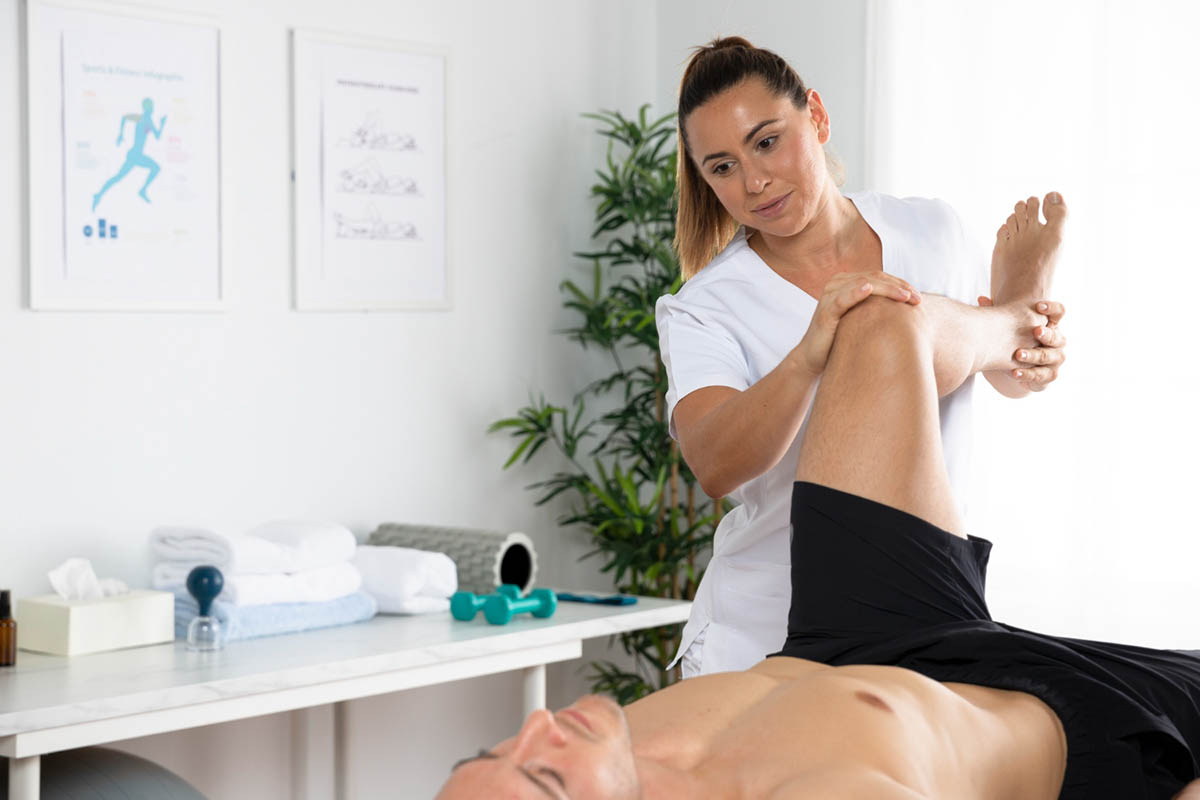Arthritis affects more than 350 million people globally. In the United States, 1 in 4 adults has arthritis. This chronic condition can significantly limit everyday tasks, causing chronic pain, stiffness, and reduced mobility. While various treatments for arthritis are available, physical therapy stands out as a noninvasive approach to managing arthritis, offering numerous benefits.
What is Arthritis?
Definition and Types
Arthritis is a broad term that refers to inflammation of the joints. There are over 100 types of arthritis, but the most common ones are osteoarthritis (OA) and rheumatoid arthritis (RA). Osteoarthritis is a degenerative joint disease characterized by the breakdown of joint cartilage, while rheumatoid arthritis is an autoimmune disease that targets the lining of the joints. Incorporating arthritis physical therapy into treatment plans can help manage these joint conditions effectively.
Symptoms and Challenges
Common symptoms of arthritis include joint pain, swelling, stiffness, and decreased range of motion. These symptoms can make daily tasks challenging, from walking and climbing stairs to gripping objects and dressing. The chronic nature of arthritis often leads to a decline in quality of life, making effective management essential. Incorporating physical therapy tips into your routine can provide significant relief and improve daily life.
How Physical Therapy Helps Arthritis

Pain Relief
One of the primary benefits of physical therapy for arthritis is pain relief. Physical therapists use various techniques to reduce pain, including manual therapy, exercise, and modalities like heat and ice packs. These methods can help alleviate discomfort without the need for medication. For severe pain or muscle spasms, physical therapists might use techniques such as electrical currents to provide additional relief.
Improved Joint Function
Physical therapy focuses on improving physical function through targeted exercises and activities. Building strength around the affected joints can provide better support, reduce strain, and enhance overall joint stability.
Increased Joint Mobility
Stiffness and limited range of motion are common issues for people with osteoarthritis. Physical therapists design individualized exercise models to improve flexibility and range of motion, making everyday tasks easier. Gentle stretching and other forms of exercise can be particularly beneficial.
Improve Movement Patterns
Incorrect movement patterns can exacerbate arthritis symptoms and lead to further joint damage. Physical therapists help patients develop proper body mechanics to reduce stress on the joints and prevent injury.
Relieve Stiffness
Stiffness is a hallmark of arthritis, often worsening after periods of inactivity. Physical therapy includes stretching exercises and other techniques to reduce stiffness and increase joint flexibility, which is crucial for managing hip osteoarthritis, knee joints, and post-traumatic arthritis.
Improve Balance and Stability
Arthritis can affect balance and stability, increasing the risk of falls. Physical therapists work with patients to enhance their balance and coordination, promoting safer movement and reducing fall risk. This is especially important for female patients who may be at higher risk due to factors such as extra weight or other health conditions.
Physical Therapy Techniques for Treating Arthritis
Pain Management
Hot and Cold Compress
Applying heat or cold to the affected joints can provide immediate pain relief. Heat helps to relax muscles and increase blood flow, while cold reduces inflammation and numbs the painful joints. For acute injury or muscle spasms, physical therapists might use techniques such as electrical currents to provide additional relief.
Medications
Physical therapists may collaborate with healthcare professionals to manage pain through medications. They can also guide the use of over-the-counter pain relievers and anti-inflammatory drugs and recommend diet interventions or digital interventions as needed.
Supplements
Certain supplements, such as glucosamine and chondroitin, may help manage arthritis symptoms. Physical therapists can offer advice on the appropriate use of these supplements.
Topical Treatments
Topical treatments, such as creams and gels, can be applied directly to the skin over the affected joints to relieve pain and inflammation.
Exercise Therapy
Aerobic Exercises
Low-impact aerobic exercises, such as walking, swimming, and cycling, can help improve cardiovascular health without putting excessive strain on the joints. Aerobic exercise training is an important aspect of managing arthritis.
Strengthening Exercises
Strengthening exercises build muscle strength around the affected joints, providing better support and reducing pain. Regular exercise also helps maintain a healthy weight, which can alleviate stress on arthritic joints.
Flexibility Exercise
Stretching exercises improve flexibility and range of motion, helping to alleviate stiffness and improve joint function.
Physical Tips for Exercising with Arthritis
It’s essential to exercise safely with arthritis. Start with gentle exercises, gradually increase intensity, and listen to your body to avoid overexertion. Physical activity should be tailored to individual needs, and physical therapists can provide personalized exercise plans and tips to ensure safe and effective workouts.
Manual Therapy
Massage
Massage therapy can help reduce muscle tension, improve circulation, and relieve pain. Physical therapists use different massage techniques to target specific areas affected by arthritis.
Joint Mobilization
Joint mobilization techniques involve gently moving the joints to improve the range of motion and reduce stiffness. This hands-on approach can be particularly beneficial for arthritis patients.
Assistive Devices
Use of Braces and Orthotics
Braces and orthotic devices can support the joints, reduce pain, and improve function. Physical therapists can recommend and fit these devices to ensure optimal benefit.
How Effective Is Physical Therapy for Arthritis?

Physical therapy is highly effective for managing arthritis symptoms. Studies have shown that physical therapy can reduce pain, improve joint function, and enhance the quality of life for arthritis patients. In 2020, an estimated 17.6 million people had rheumatoid arthritis worldwide. Clinical studies have demonstrated the effectiveness of physical therapy as a nonpharmacological treatment for OA due to its cost savings, convenience, and few adverse reactions.
How to Start Physical Therapy
Finding the Right Physical Therapists
Choosing the right physical therapist is crucial for effective arthritis management. Look for a licensed therapist with experience treating arthritis and a personalized approach to care. Many people wonder, will physical therapy help arthritis? The answer is yes; a skilled therapist can tailor treatments to alleviate symptoms and improve function.
What to Expect in a Physical Therapy for Arthritis Session
During a physical therapy session, the therapist will assess your condition, discuss your goals, and develop a customized treatment plan. Sessions may include exercises, manual therapy, and other techniques tailored to your needs.
By incorporating physical therapy into your arthritis management plan, you can take control of your symptoms and lead a more active and fulfilling life. For more information on physical therapy for arthritis, contact Mitchell Holistic Health today.
Conclusion
Physical therapy offers a holistic and effective approach to managing arthritis. By focusing on pain relief, improved joint function, and enhanced mobility, physical therapy can significantly improve the quality of life for arthritis patients. If you’re struggling with arthritis, consider consulting a physical therapist to explore the benefits of this noninvasive treatment.
FAQs
What do they do at physical therapy for arthritis?
Physical therapists use a combination of exercises, manual therapy, and other techniques to reduce pain, improve joint function, and enhance mobility for arthritis patients.
How long does physical therapy for arthritis last?
The duration of physical therapy for arthritis varies depending on the severity of the condition and the individual’s response to treatment. It can range from a few weeks to several months.
Can physical therapy slow down arthritis?
Physical therapy cannot cure arthritis, but it can slow down its progression by improving joint function, reducing pain, and promoting overall joint health.


